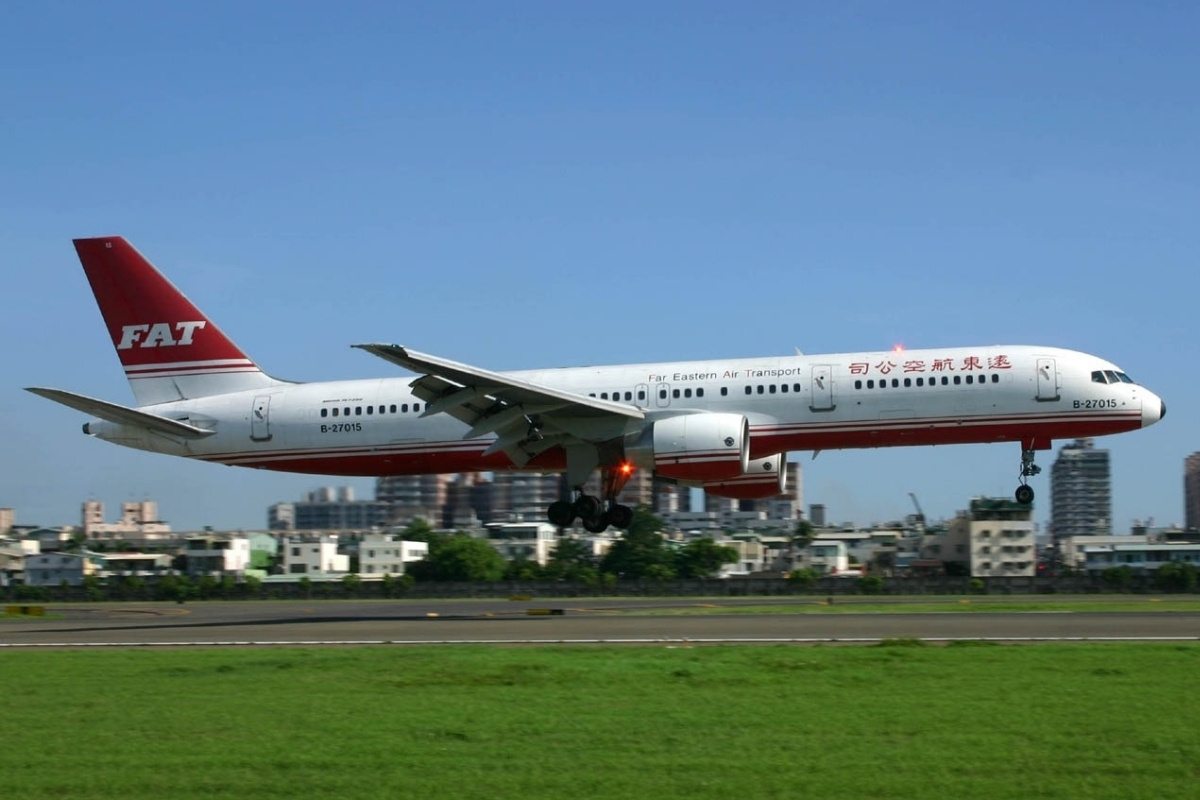
Far Eastern Air Transport (FAT), a name that might not ring a bell for everyone, has a rich history in the aviation world. Founded in 1957, this Taiwanese airline has seen its fair share of ups and downs. Did you know that FAT was one of the first airlines in Taiwan to operate international flights? Over the years, it has expanded its fleet, faced financial hurdles, and even temporarily ceased operations. Despite these challenges, FAT has managed to make a comeback, continuing to serve passengers with dedication. Curious about the unique aspects of this airline? Here are 25 fascinating facts that will give you a deeper understanding of Far Eastern Air Transport's journey through the skies.
A Brief History of Far Eastern Air Transport
Far Eastern Air Transport (FAT) has a rich history that spans decades. This Taiwanese airline has seen its fair share of ups and downs, making it a fascinating subject for aviation enthusiasts. Let's dive into some intriguing facts about this airline.
- Far Eastern Air Transport was founded in 1957, making it one of Taiwan's oldest airlines.
- The airline initially operated cargo flights before expanding into passenger services in 1965.
- FAT's first aircraft was a Douglas DC-3, a popular model during the mid-20th century.
- In the 1970s, the airline expanded its fleet to include Boeing 737s, which became the backbone of its operations.
- The airline faced financial difficulties in the early 2000s, leading to a temporary suspension of operations in 2008.
Fleet and Operations
Far Eastern Air Transport has operated a variety of aircraft over the years, each contributing to its unique history. Here are some key details about its fleet and operations.
- FAT was the first Taiwanese airline to introduce the McDonnell Douglas MD-80 series into its fleet.
- At its peak, the airline operated a fleet of over 20 aircraft, including Boeing 757s and MD-82s.
- The airline's primary hub was Taipei Songshan Airport, with secondary hubs at Kaohsiung International Airport and Taichung Airport.
- FAT offered both domestic and international flights, connecting Taiwan to destinations in Southeast Asia and China.
- In 2011, the airline resumed operations after a three-year hiatus, focusing initially on domestic routes.
Challenges and Resilience
Like many airlines, Far Eastern Air Transport has faced numerous challenges but has shown remarkable resilience. Here are some notable moments.
- The airline declared bankruptcy in 2008 but managed to restructure and resume operations in 2011.
- In 2019, FAT once again faced financial difficulties, leading to another suspension of services.
- Despite these challenges, the airline has maintained a loyal customer base, particularly for its domestic routes.
- FAT has been involved in several safety incidents, but none have resulted in fatalities, a testament to its commitment to safety.
- The airline has received multiple awards for its service quality and operational efficiency over the years.
Innovations and Contributions
Far Eastern Air Transport has made several contributions to the aviation industry, particularly in Taiwan. Here are some of its notable innovations.
- FAT was one of the first airlines in Taiwan to offer in-flight entertainment on domestic flights.
- The airline introduced a frequent flyer program in the early 2000s, rewarding loyal customers with various perks.
- FAT has been a pioneer in adopting new technologies, including online booking and electronic ticketing.
- The airline has collaborated with several international carriers, forming codeshare agreements to expand its network.
- FAT has also been involved in various community service initiatives, including disaster relief efforts and educational programs.
Recent Developments
Far Eastern Air Transport continues to evolve, adapting to the ever-changing aviation landscape. Here are some recent developments.
- In 2020, the airline announced plans to modernize its fleet, including the acquisition of new, fuel-efficient aircraft.
- FAT has been exploring new international routes, aiming to expand its presence in the Asia-Pacific region.
- The airline has invested in improving its customer service, including the introduction of a new mobile app for easier booking and check-in.
- FAT has also focused on sustainability, implementing various eco-friendly practices to reduce its carbon footprint.
- Despite the challenges posed by the COVID-19 pandemic, Far Eastern Air Transport remains committed to providing safe, reliable air travel for its passengers.
Final Thoughts on Far Eastern Air Transport
Far Eastern Air Transport has a rich history filled with ups and downs. From its early days in the 1950s to its recent challenges, this airline has shown resilience. Known for its domestic and international routes, it played a significant role in Taiwan's aviation industry. Despite facing financial troubles and temporary shutdowns, it managed to bounce back, showing its determination to stay in the skies. The airline's fleet, consisting of various aircraft models over the years, highlights its adaptability. While it may not be the largest airline, its story is one of perseverance and dedication. Whether you're an aviation enthusiast or just curious, Far Eastern Air Transport's journey offers valuable insights into the world of airlines. Keep an eye on this airline; its future might hold more interesting chapters.
Was this page helpful?
Our commitment to delivering trustworthy and engaging content is at the heart of what we do. Each fact on our site is contributed by real users like you, bringing a wealth of diverse insights and information. To ensure the highest standards of accuracy and reliability, our dedicated editors meticulously review each submission. This process guarantees that the facts we share are not only fascinating but also credible. Trust in our commitment to quality and authenticity as you explore and learn with us.
